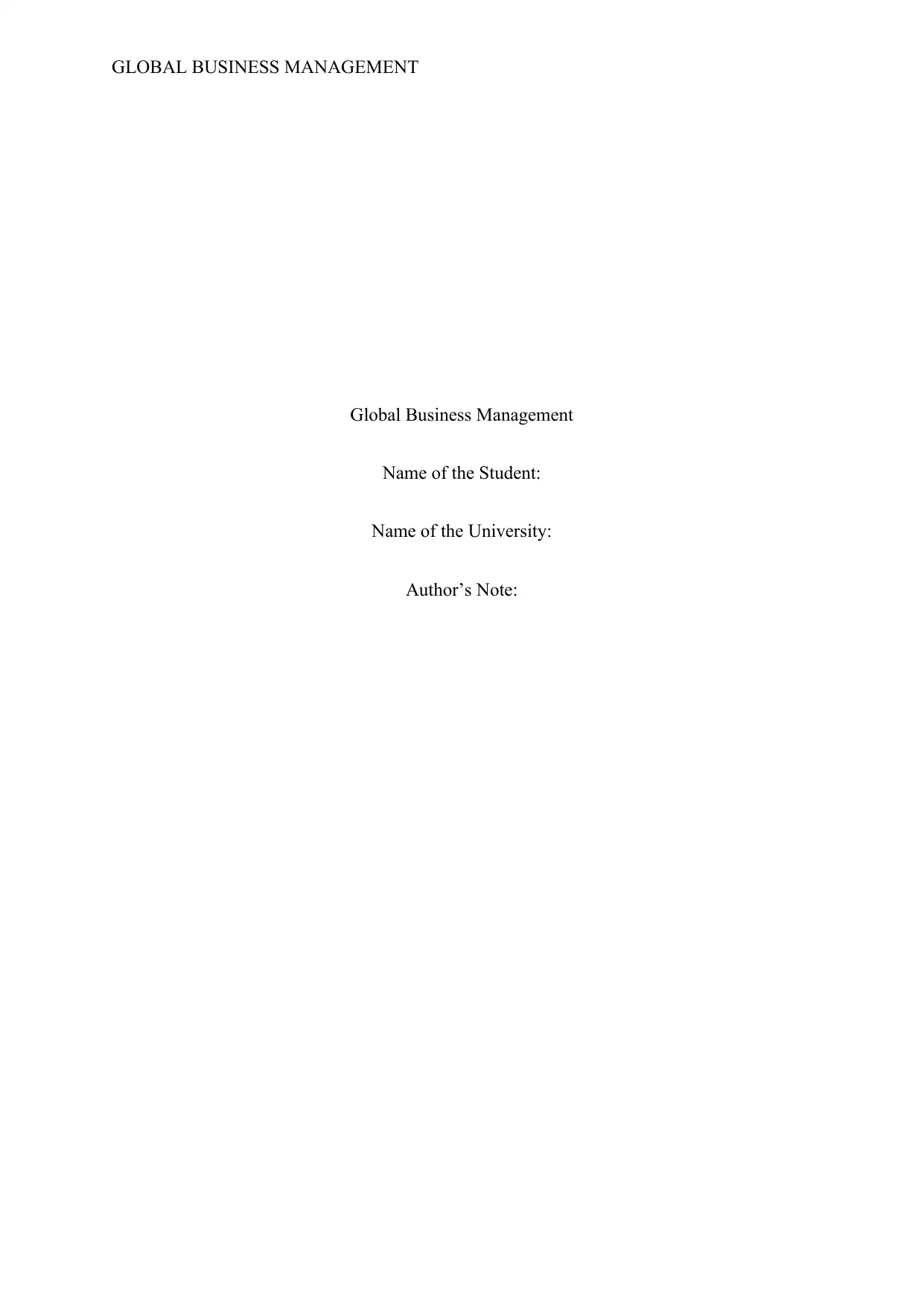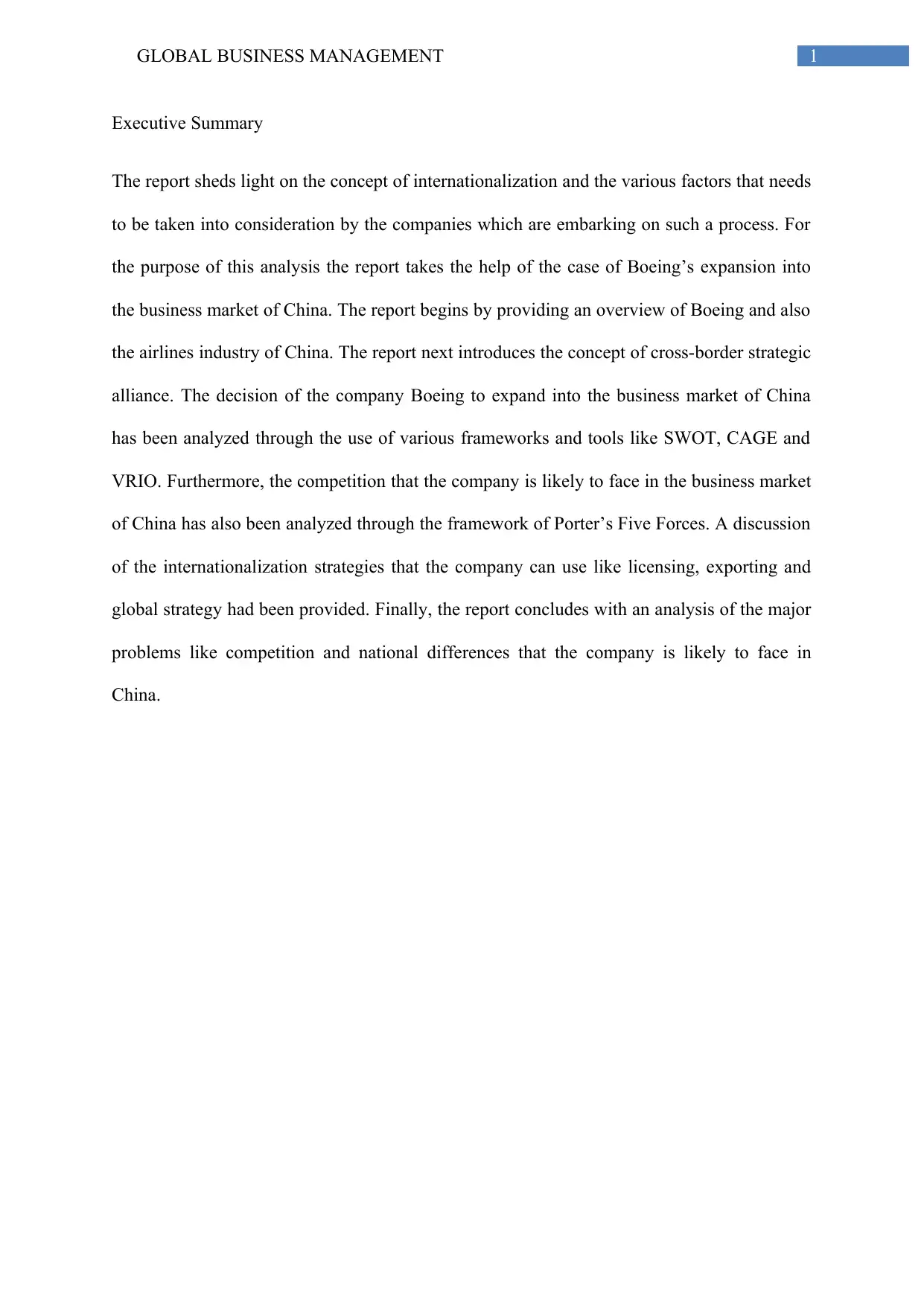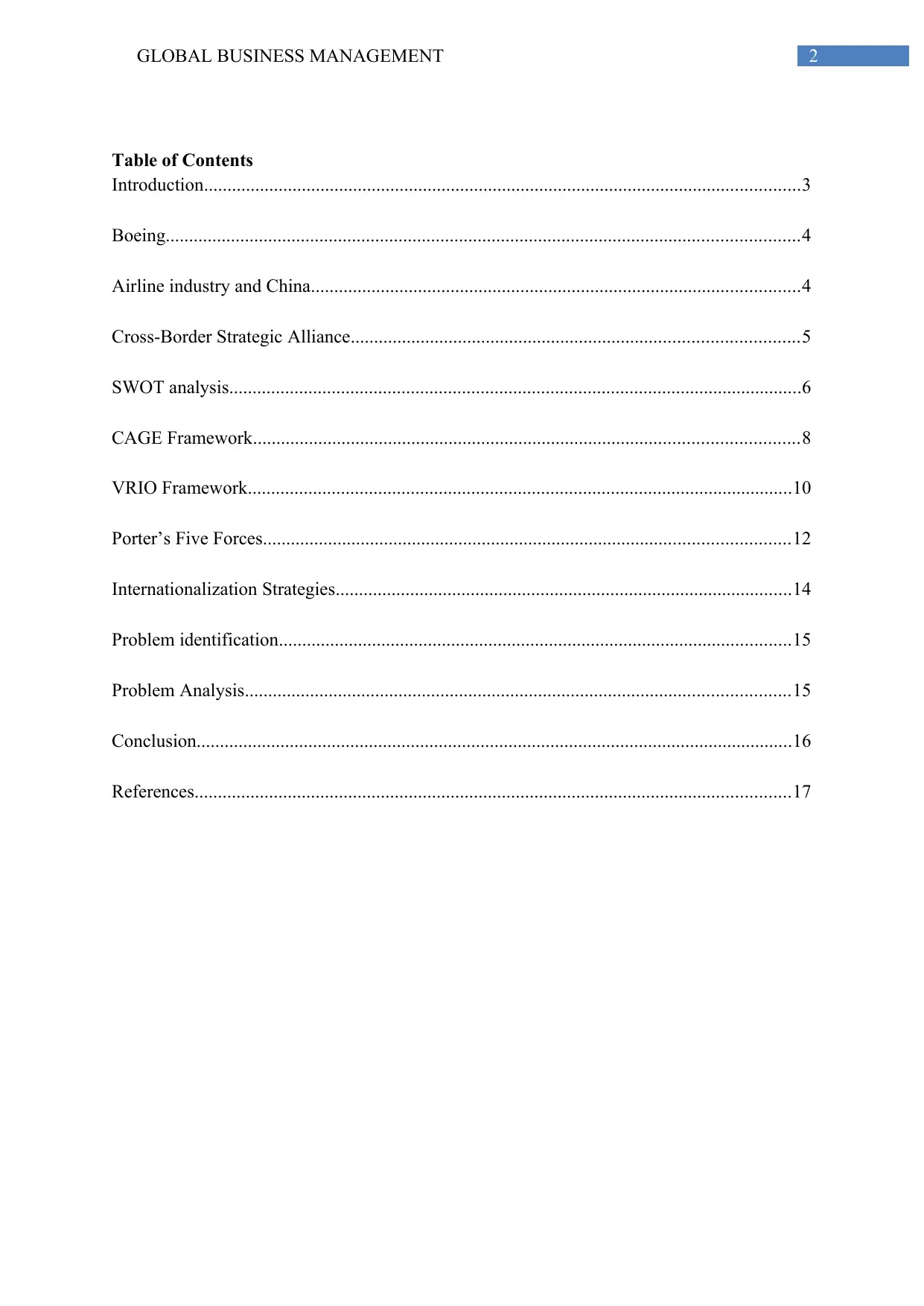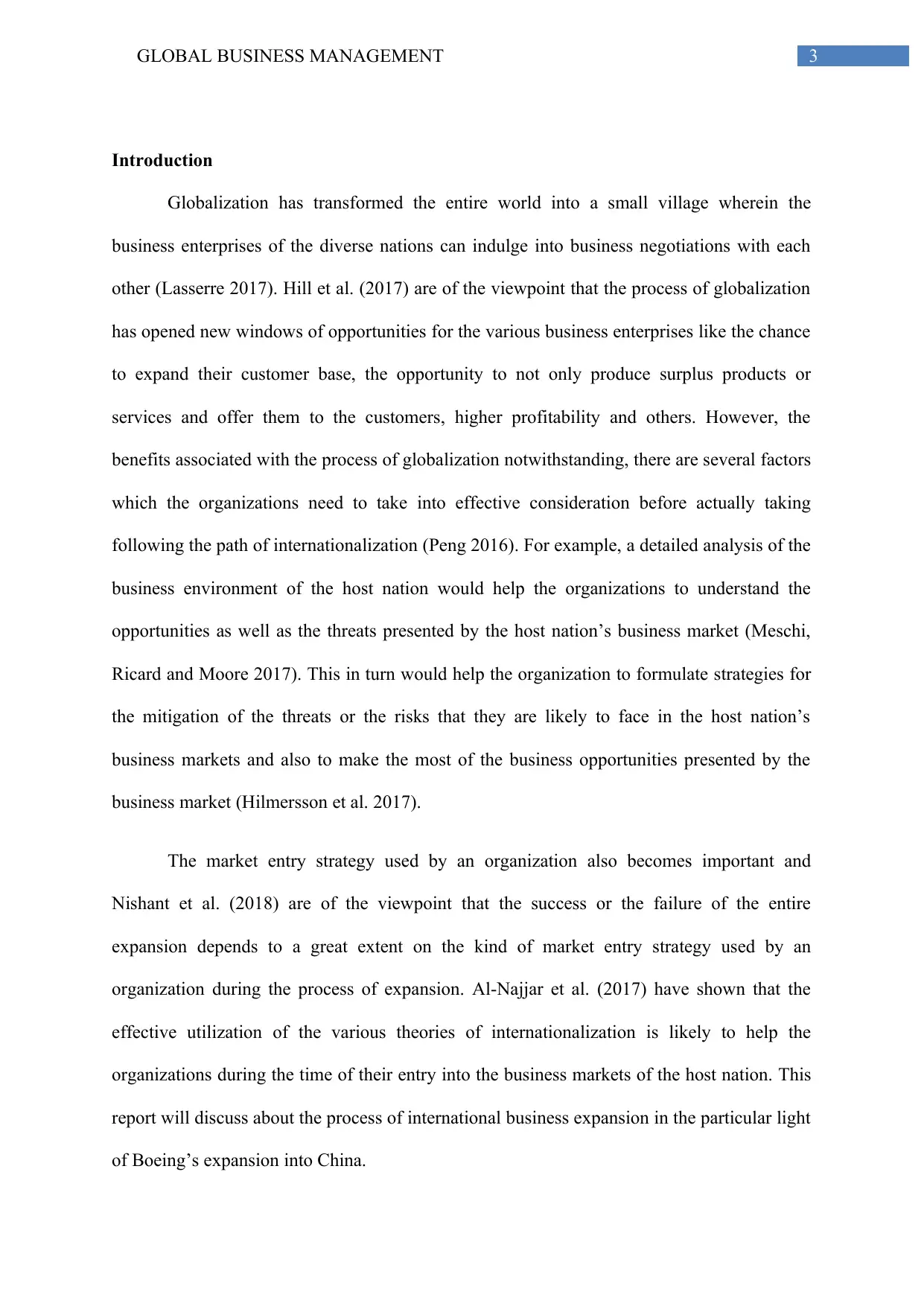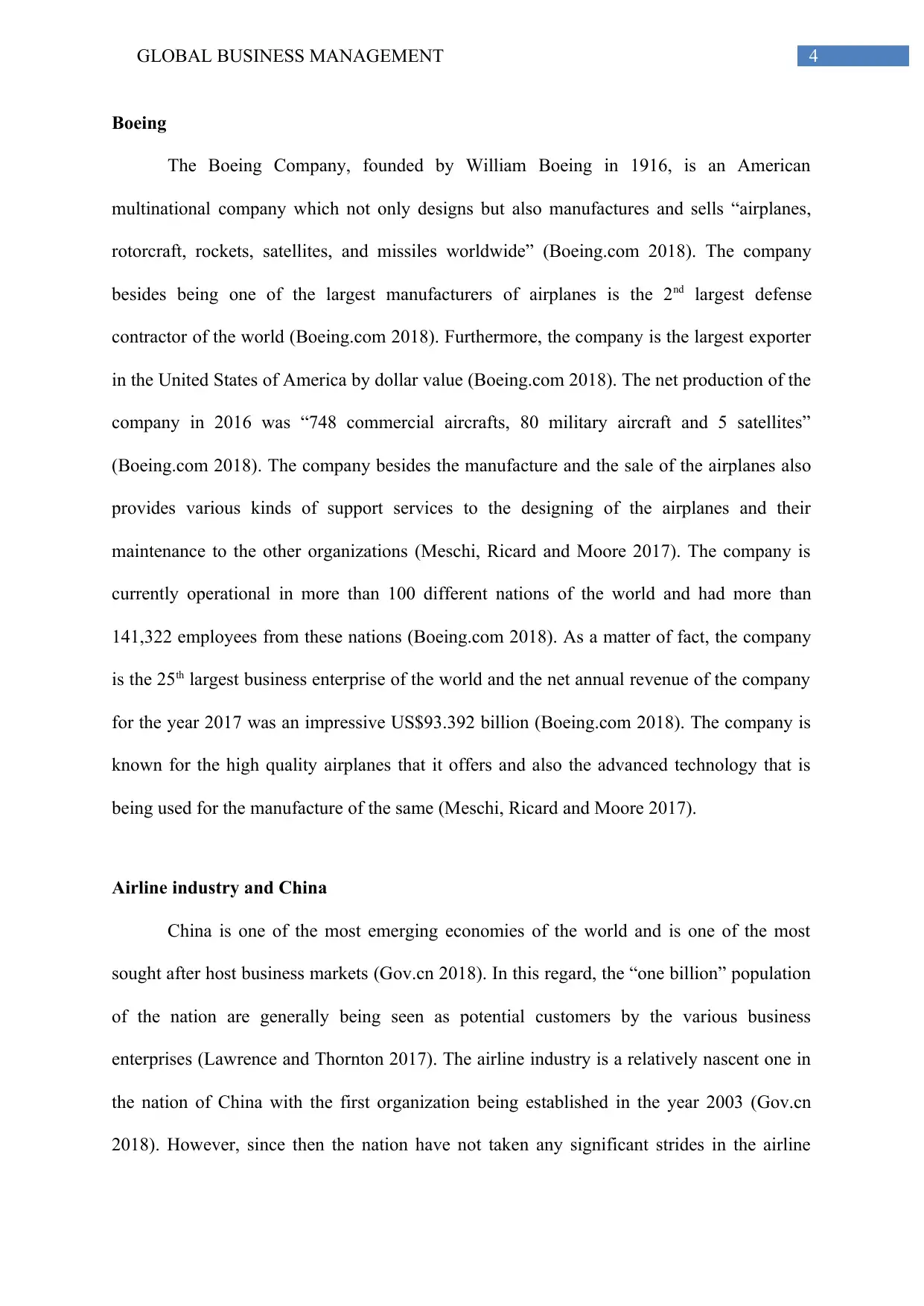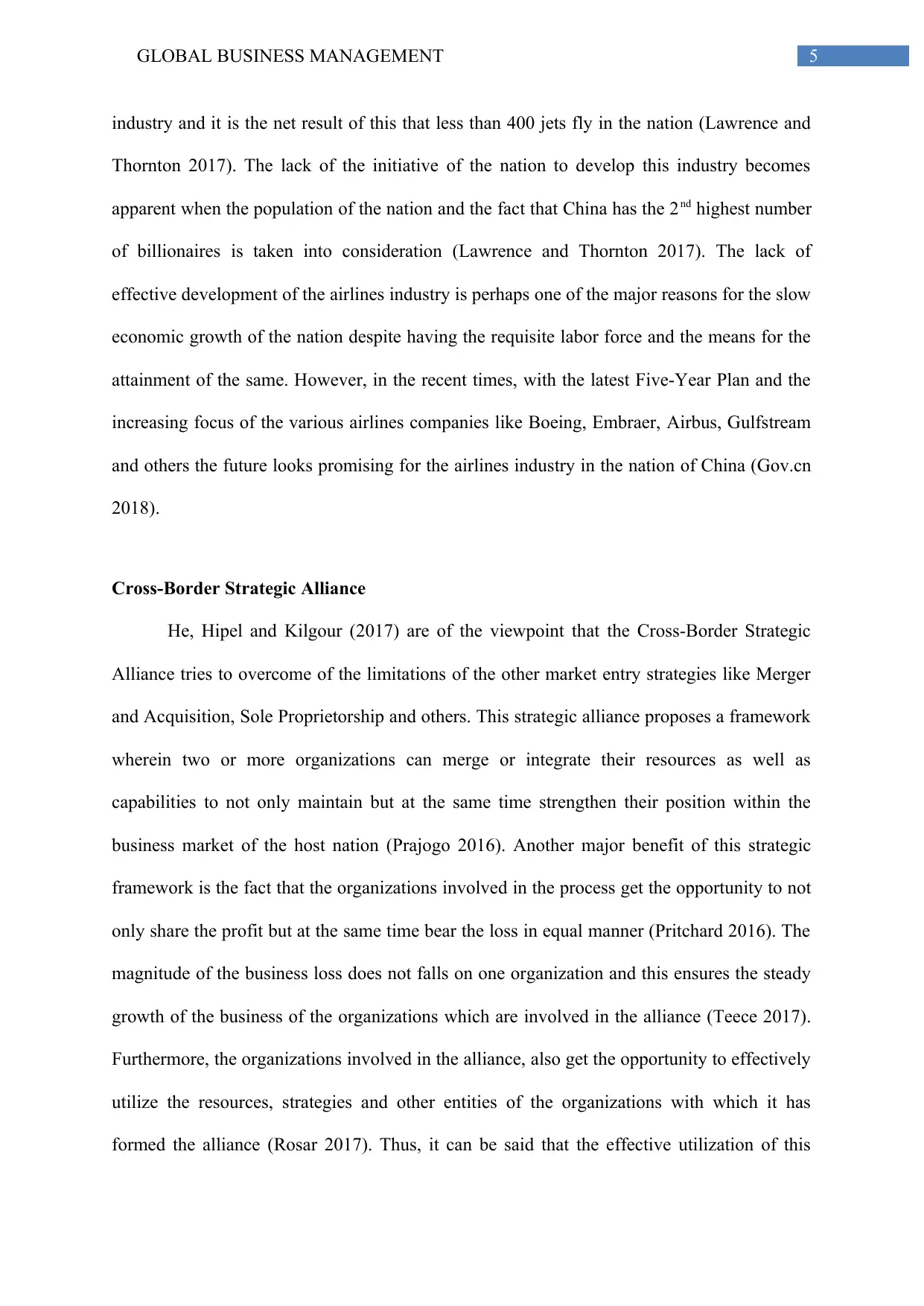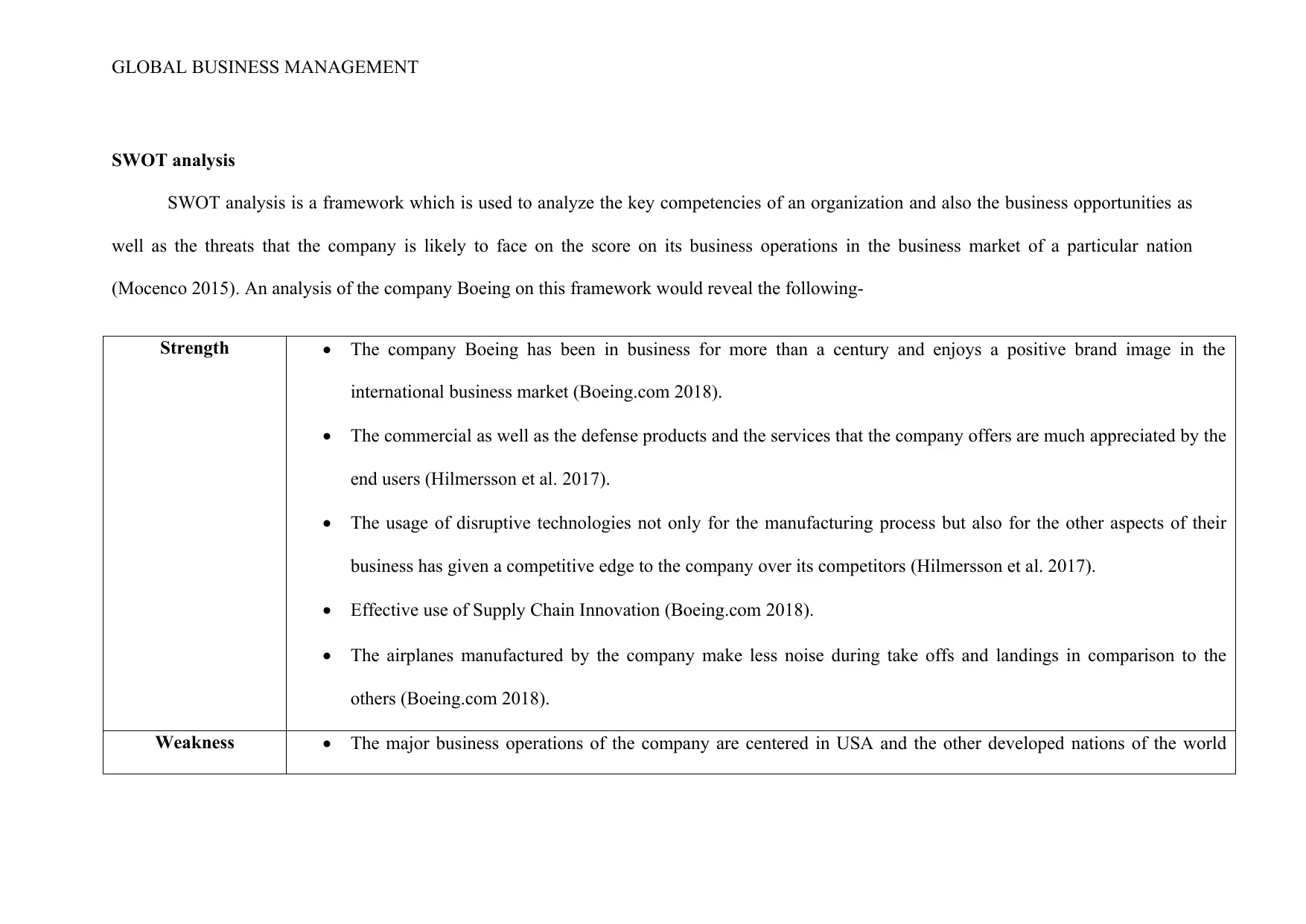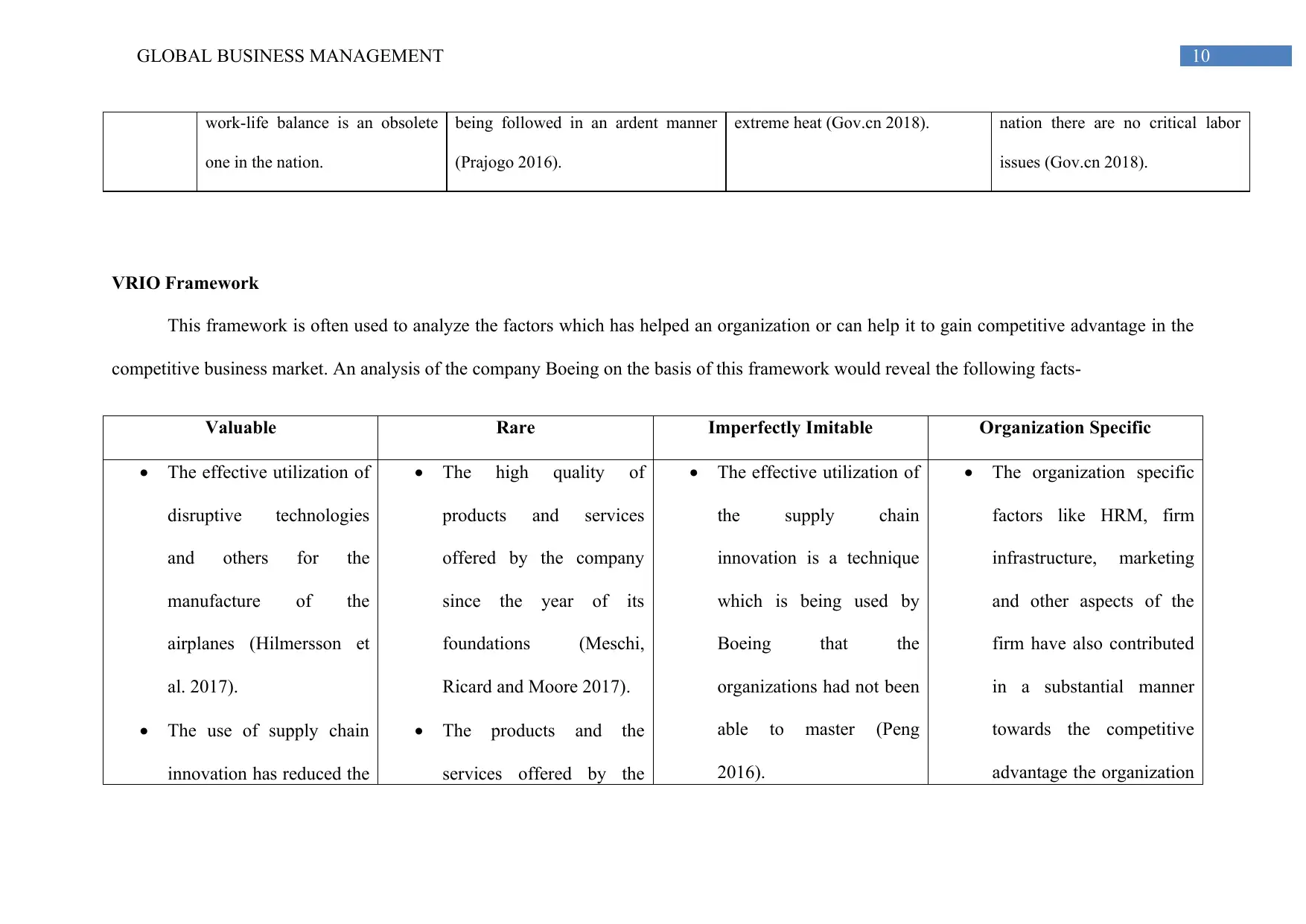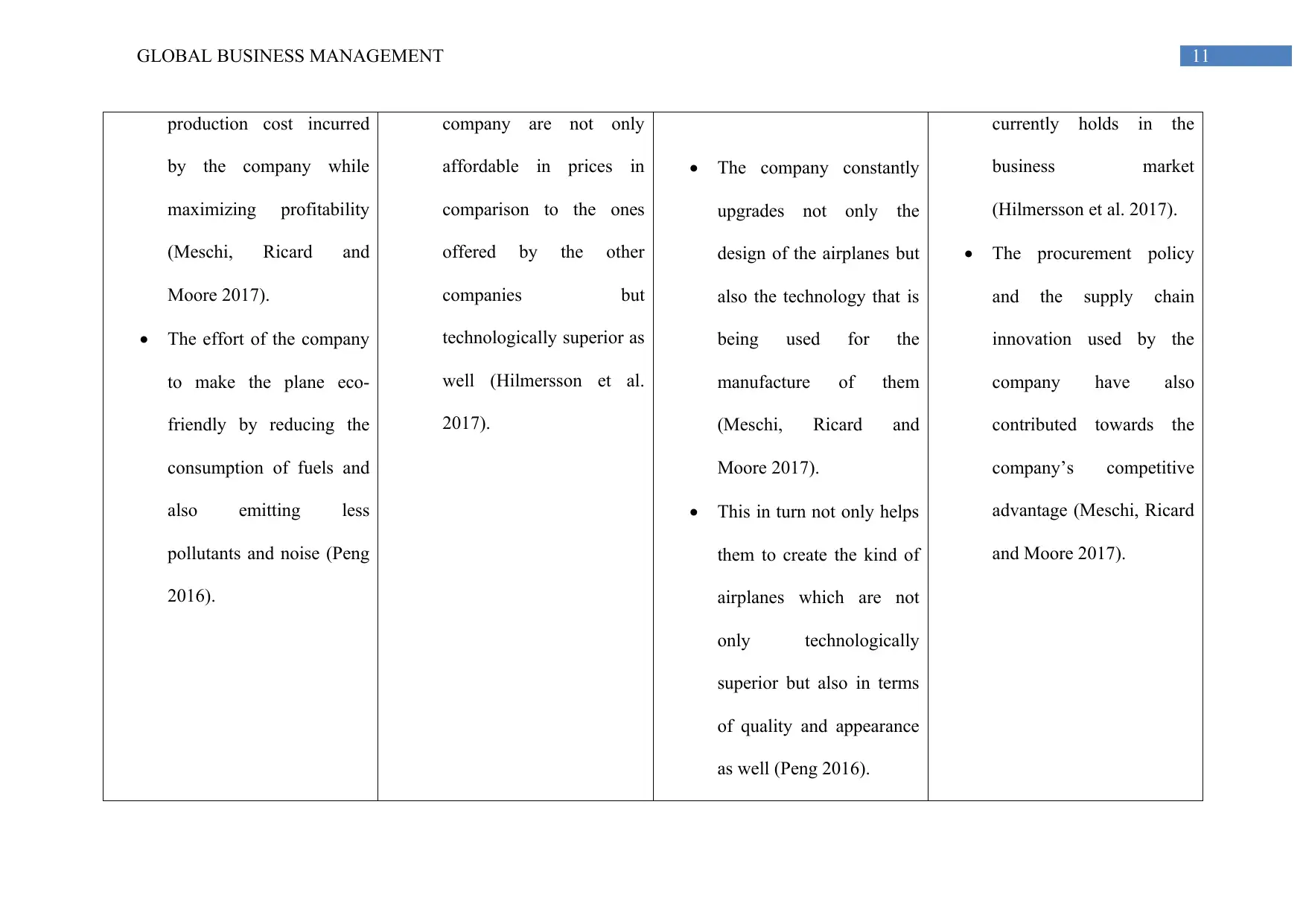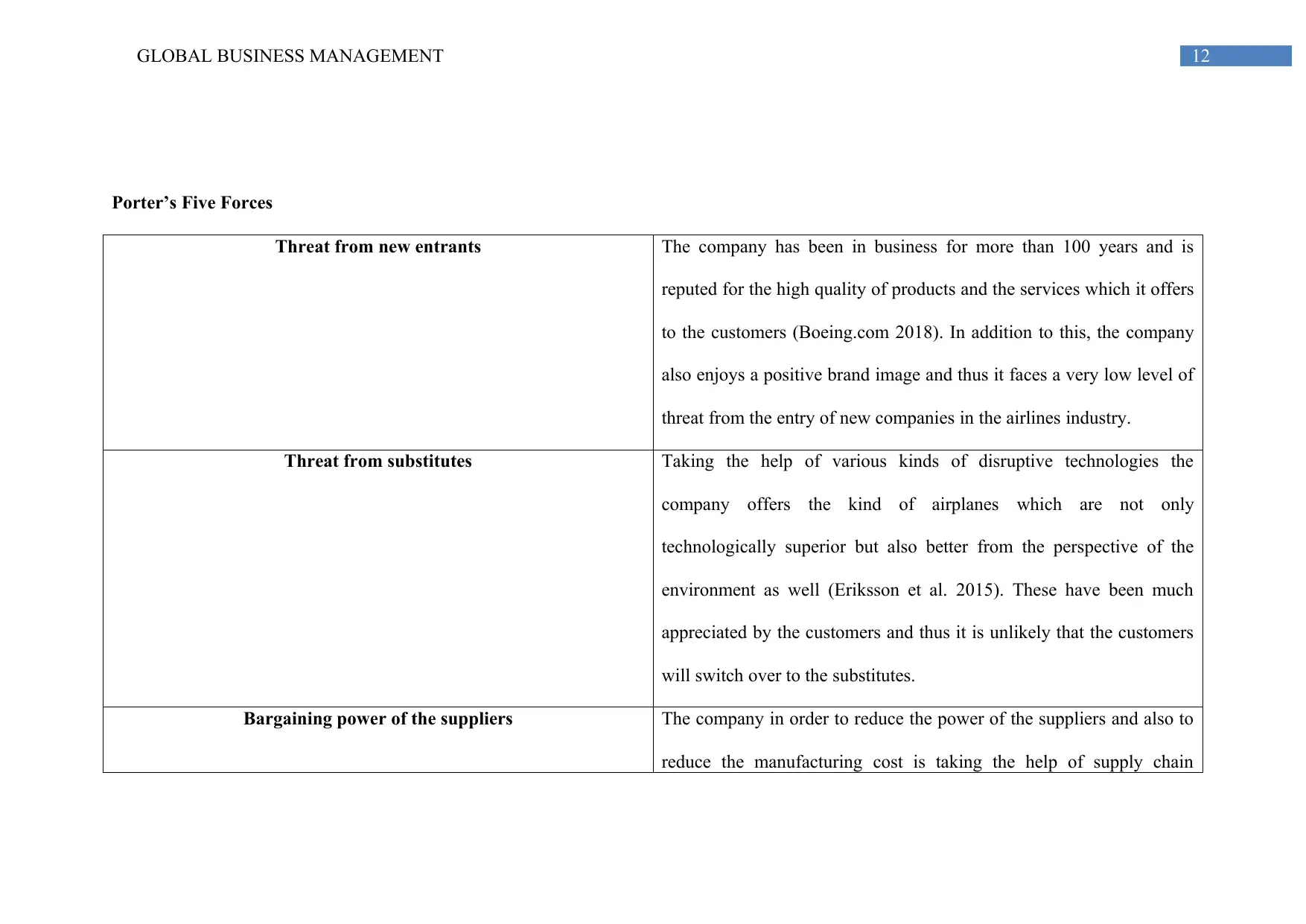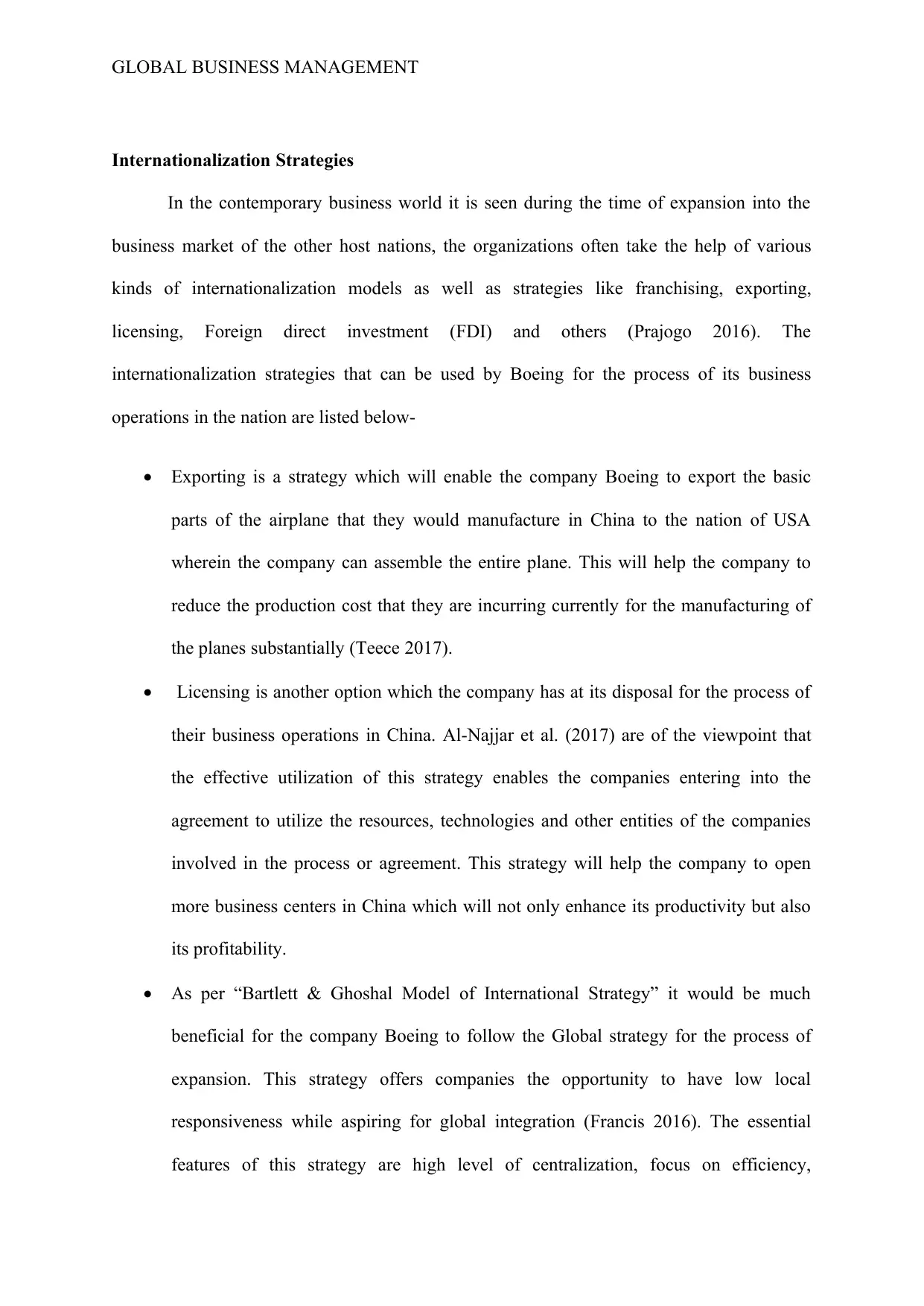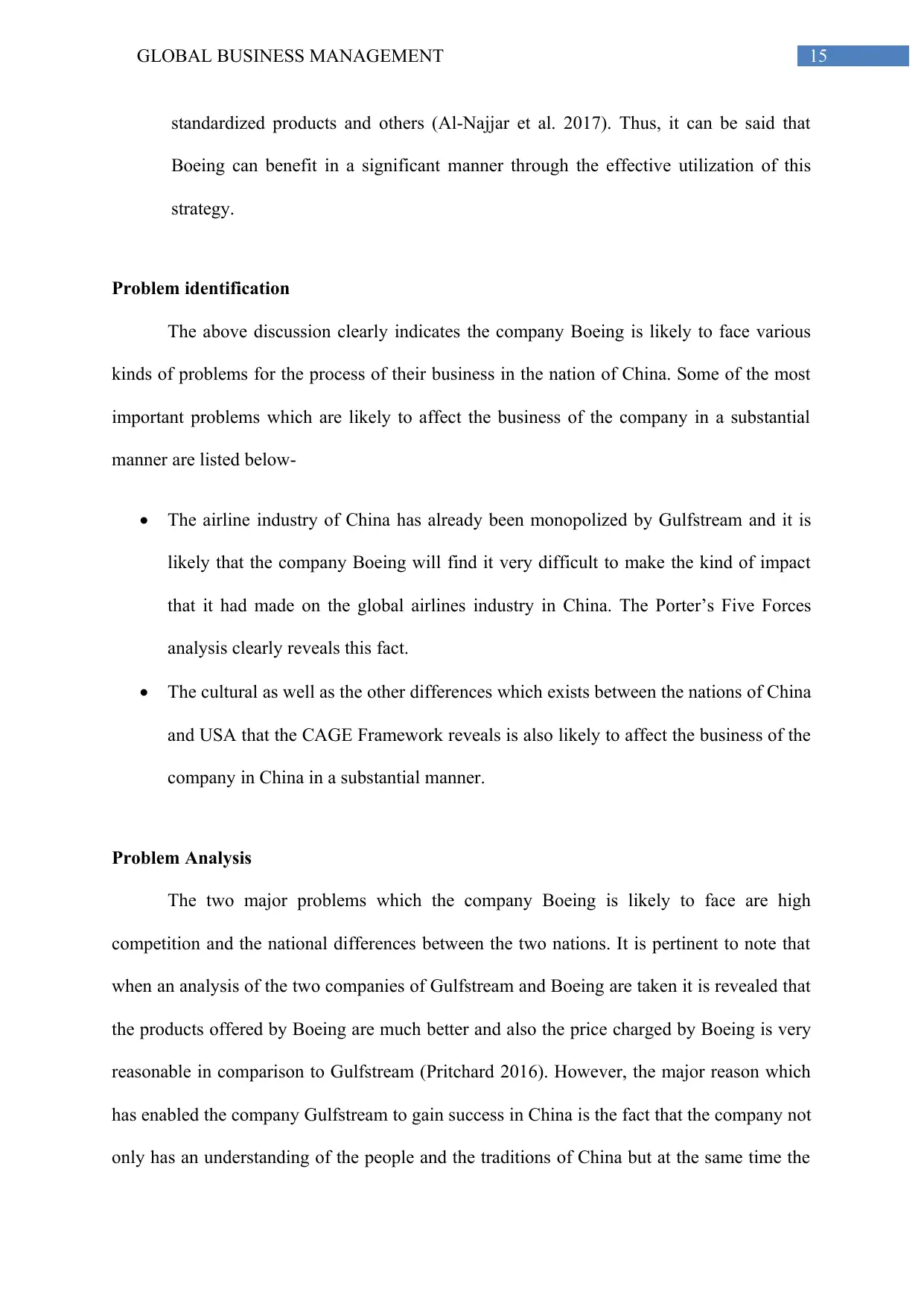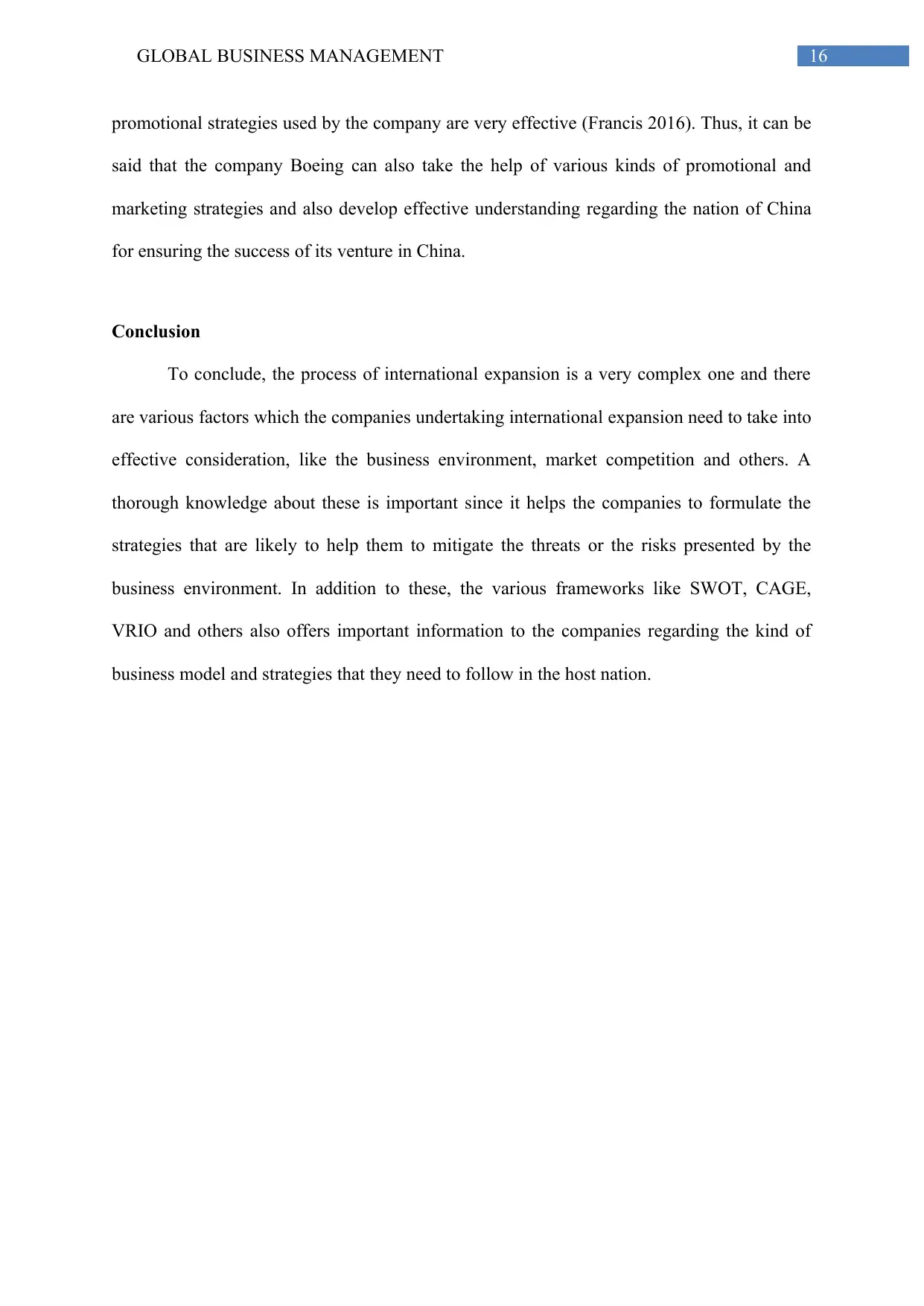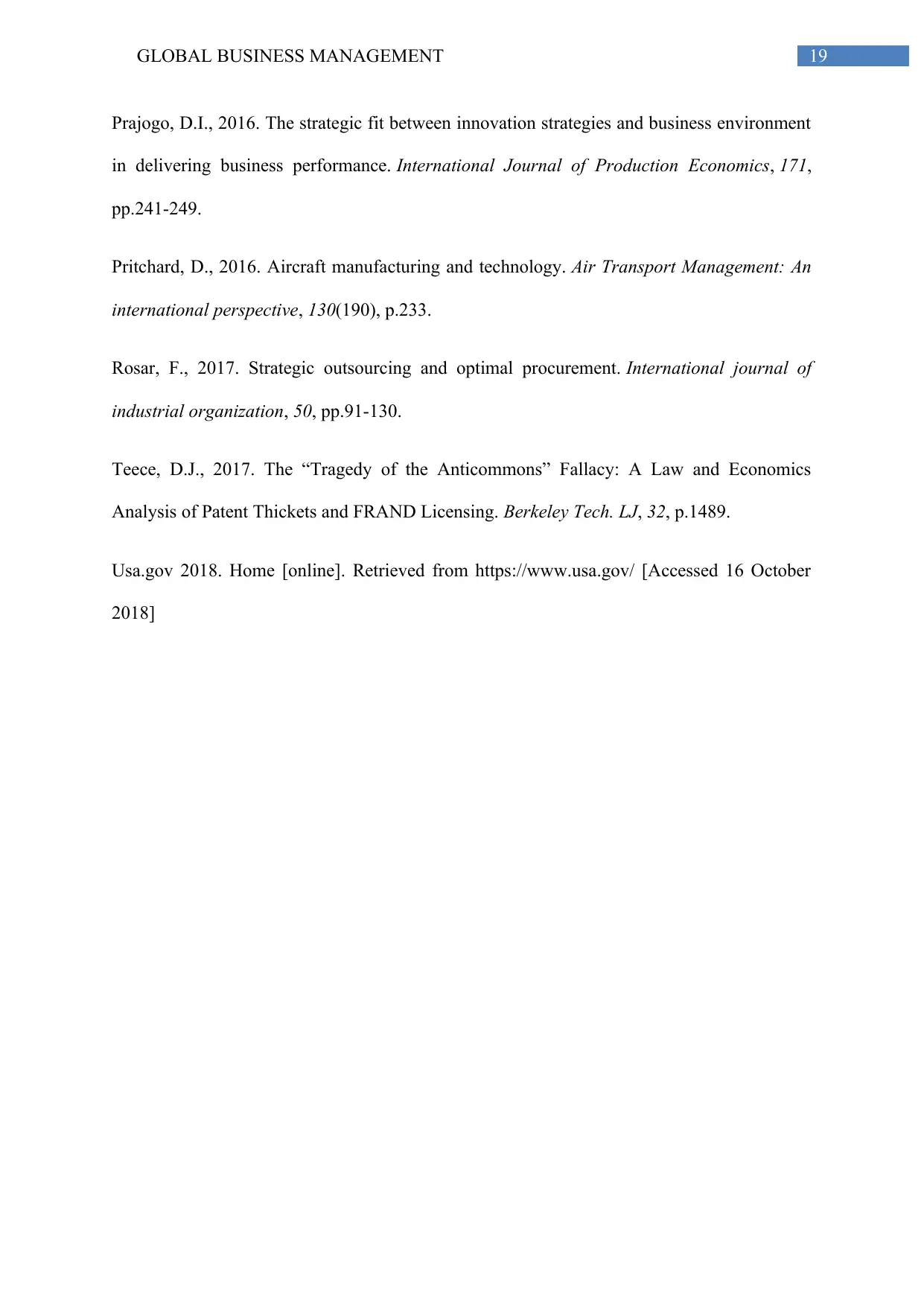This report analyzes the process of international business expansion in the particular light of Boeing’s expansion into China. It provides an overview of Boeing and the airlines industry of China. The report next introduces the concept of cross-border strategic alliance. The decision of the company Boeing to expand into the business market of China has been analyzed through the use of various frameworks and tools like SWOT, CAGE and VRIO. Furthermore, the competition that the company is likely to face in the business market of China has also been analyzed through the framework of Porter’s Five Forces. A discussion of the internationalization strategies that the company can use like licensing, exporting and global strategy had been provided. Finally, the report concludes with an analysis of the major problems like competition and national differences that the company is likely to face in China.
![[object Object]](/_next/static/media/star-bottom.7253800d.svg)
![[object Object]](/_next/static/media/star-bottom.7253800d.svg)
